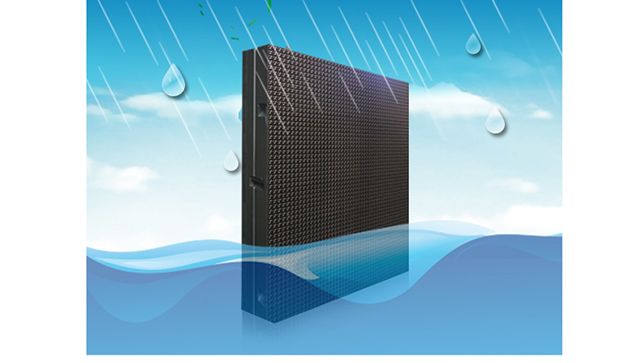ไม่มีสินค้าในตะกร้า.
ข่าวธุรกิจ
Harm of high temperature to LED display video wall.
The ambient temperature of outdoor LED display screen is quite complex.
1. High temperature will lead to the complete destruction of LED display screen.
(1) led display panel operating temperature exceeding the chip carrying temperature will rapidly reduce the luminous efficiency of LED display, produce obvious light attenuation, and cause damage (2) LED displays are mostly packaged with transparent epoxy resin. If the junction temperature exceeds the solid phase transition temperature (usually 125 ℃), the packaging material will change to rubber like and the coefficient of thermal expansion will rise sharply, which will lead to open circuit and failure of LED display. 2. Temperature rise will shorten the life of LED display. The life of LED display is shown by its light fading, that is, the brightness becomes lower and lower after a long time, until it finally goes out. The time of luminous flux attenuation 30 is usually defined as its lifetime.
usually causes led display panel light failure in the following aspects:
(1) defects in LED display chip materials will proliferate and multiply rapidly at high temperature until they invade the luminous region, forming a large number of non radiative composite centers, which seriously reduces the luminous efficiency of LED display. นอกจากนี้, at high temperature, micro defects in the material and fast expanding impurities from the interface and the board will also introduce into the luminescent region, forming a large number of deep energy levels, which will also accelerate the light attenuation of LED display devices (2) At high temperature, transparent epoxy resin will be denatured and yellowing, which will affect its light transmission performance. The higher the working temperature, the faster this process will be, which is another main reason for LED display panel light failure.
(3) phosphor is also one of the main reasons that affect the LED display light attenuation, because the phosphor attenuation is very serious at high temperature. ดังนั้น, high temperature is the main cause of LED display screen light failure and shortening LED display life. Different brands of LED display screen light attenuation is different, usually led display manufacturers will give a set of standard light attenuation curve. The luminous flux attenuation of LED display caused by high temperature is irrecoverable. The luminous flux before the irrecoverable light attenuation of LED display screen is called the “initial luminous flux” of LED display screen. ก 6032 (1) the concentration of electrons and holes will increase, the band gap will decrease, and the electron mobility will decrease.
(2) led display increases, the probability of radiation recombination between electrons and holes in the potential well is reduced, resulting in non radiative recombination (heat generation), which reduces the internal quantum efficiency of LED display.
(3) led display panel causes the blue light peak of the chip to shift to the long wave direction, which makes the emission wavelength of the chip and the excitation wavelength of the phosphor not match, and also causes the external light extraction efficiency of the white LED display screen to decrease. With the increase of temperature, the quantum efficiency of phosphor and the light output
(4) led display screen decrease, and the extraction efficiency of external light of LED display screen decreases.
(5) silica gel were greatly affected by ambient temperature. With the increase of temperature, the thermal stress inside the silica gel increases, which leads to the decrease of the refractive index of silica gel, which affects the light efficiency of LED display. The influence of temperature on the luminous wavelength (light color) of LED display screen
the luminous wavelength of LED display screen can be generally divided into peak wavelength and main wavelength. The peak wavelength is the wavelength with the maximum light intensity, and the main wavelength can be determined by X and Y chromaticity coordinates, which reflects the color perceived by human eyes. Obviously, the change of LED display wavelength caused by junction temperature will directly make the eye feel different about the color of LED display. For an LED display device, the band gap value of the luminescent zone material directly determines the wavelength or color of the device. With the increase of temperature, the band gap of the material will decrease, which will lead to the length of the light emission wavelength and the red shift of the color.
5. Too high temperature will limit the maximum injection current of LED display screen. The above points are the introduction of the influence of temperature on LED display screen. Through the above introduction, it is known that the influence of temperature rise on LED display is very great. So the right temperature is the focus of LED display.

